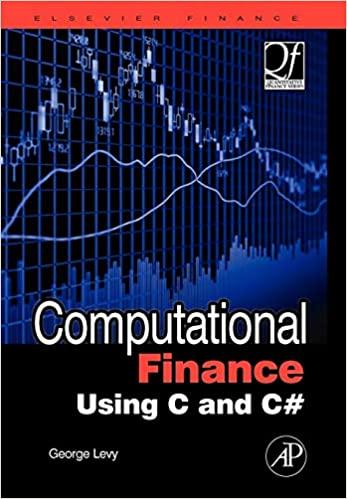Question
Do a literature review on the following: 1. Introduction This paper is motivated by three stylized facts about the operation of real-world financial markets. First,
Do a literature review on the following:
1. Introduction
This paper is motivated by three stylized facts about the operation of real-world financial markets. First, as real-world financial data are asymmetric and fat-tailed, the return series cannot be approximated by normal distribution. Second, financial time series are marked by volatility clustering and last, dependence structure of multivariate distribution is required to model such data and the model needs to be flexible enough to accommodate different types of financial data. Given these characteristics of financial data, many portfolio selection and risk measurement models have been developed to account for such data. Interestingly, we have not come across literature that reviews these developments in recent years. The present research would help fills this important gap. Accordingly, the aim of this paper is to review of development of the literature in the above areas and identify the directions for future research.
As already stated, financial data are known to exhibit some unique characteristics such as fat tails (leptokurtosis), volatility clustering and possible asymmetry. When the tails of distribution have a higher density than that expected under conditions of normality, it is known as fat tailed data distribution. It is a distribution that has an exponential decay (as in the normal) or a finite endpoint is considered thin tailed, while a power decay of the density function in the tails is considered a fat tailed distribution (LaBaron and Samanta 2004, p. 1). As financial data typically exhibit asymmetry and fat tails, the Gaussian distribution cannot adequately represent it. Consequently, alternative parametric distributions that can account for skewness and fat tails have been suggested in the literature. Over the years, the fat tail phenomenon and the various methods used to capture the characteristics of the fat tail of financial data has generated considerable interest among researchers. Similarly, complex dependency patterns such as asymmetry or dependence in the extremes are found in the financial data. The full characteristics of such data cannot be adequately captured by multivariate Gaussian distributions given that it cannot model extreme events. The multivariate Students t and its skewed version could be valid alternatives but also have some disadvantages as outlined by Bauwens and Laurent (2005) and others. Consequently, for such data increasingly the copula approach is being used. It not only can describe the dependence characteristics but also can be combined with other distributions such as Student t distribution to describe fat tails.
We proceed as follows: Section 2 provides an overview of the above characteristics of financial data, Section 3 reviews the literature on portfolio selection models, Section 4 reviews the literature on factor models, Section 5 is devoted to portfolio risk measurement literature review and Section 6 provides directions for future research and conclusions of the study.
2. Fat tail of Financial Data and Data Dependence
In this section, we review the literature on fat tails and data dependence.
2.1. The Concept of Fat Tails
Mandelbrot (1963) first introduced the concept of fat tails in mathematical finance to describe cotton price changes. It was followed by many econometric studies devoted to the quest for suitable classes of models that capture the essential statistical properties of stock and stock index returns, for example, Heyde et al. (2001), McAleer (2005), Liu and Heyde (2008) and Tsay (2010), among many others.
The fat tail distribution may have more than one definition, as there is no universal definition for the term tail in the first place. It generally refers to a probability distribution with a tail that looks fatter than usual or the normal distribution. A good example may be the Student t distribution which is a fat tailed distribution and exhibits tails that are fatter than the normal.
Step by Step Solution
There are 3 Steps involved in it
Step: 1

Get Instant Access to Expert-Tailored Solutions
See step-by-step solutions with expert insights and AI powered tools for academic success
Step: 2

Step: 3

Ace Your Homework with AI
Get the answers you need in no time with our AI-driven, step-by-step assistance
Get Started


